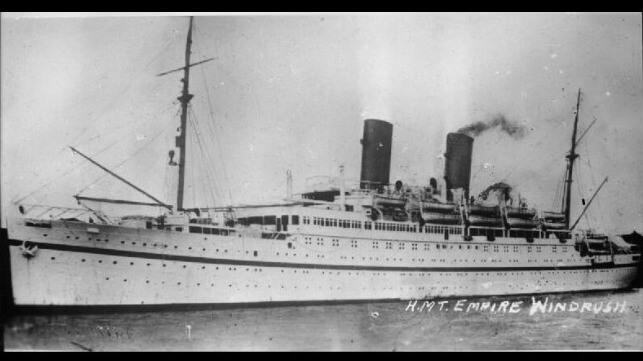Advocates Press UK to Recover the Anchor of Historic Passenger Liner

The government of the UK is under pressure to facilitate the recovery of the anchor of the ill-fated passenger liner Empire Windrush, which has become a historic symbol of Caribbean migration to the United Kingdom.
Nearly seven decades after the Empire Windrush sank under tow at a position 23 nautical miles off the coast of Algeria, campaigners are pushing for the ship’s anchor to be lifted from the seabed and displayed as a monument as part of the 75th anniversary celebrations.
Built in 1930 by Blohm & Voss, the ship was originally a German liner and troopship named the Monte Rosa before she was seized by the Royal Navy. After the war, she was used to repatriate British soldiers from far-flung overseas territories.
In 1948, Windrush arrived in Tilbury, UK on a history-making voyage from Kingston. In addition to UK servicemembers headed home, she carried 800 job-seekers from Jamaica and other British commonwealth territories in the Caribbean. Her arrival marked the start of Caribbean migration to the UK in the post-WWII era, and her name has been used as a shorthand for the new arrivals, who have often been called the "Windrush Generation."
In the late 1940s and early 1950s, Windrush continued her mission of repatriating British servicemembers from overseas. In March 1954, she departed Hong Kong with 1,500 passengers and crew on what would prove to be her final voyage. She sustained an engine room fire on the morning of March 28, 1954, and quickly lost all power. Efforts to contain the blaze were unsuccessful, and within half an hour, the master ordered all personnel to abandon ship. The vessel got off a distress call successfully, and all were rescued except for four engineers who died in the initial fire.
The destroyer HMS Saintes responded to the scene, and her crew managed to rig up a tow line to bring the still-burning vessel to Gibraltar. However, on March 30, Windrush foundered and sank in 2,600 meters of water.
Windrush's 1948 voyage from Jamaica remains a key moment of modern British history. On her arrival at Tilbury, her anchor was photographed in an iconic and powerfully poignant image, and it remains a symbol of the immigration of Caribbean migrants to the UK.
“I have seen first-hand how important a physical object, like the bell of HMS Hood, can be in connecting people to the memory of a ship and her crew. I am in no doubt that Windrush’s anchor will become a similar ‘touchstone’ for the Windrush Generation and the wider public,” said David Mearns, a deep-sea shipwreck hunter.
In June, the UK House of Commons debated the issue of lifting the anchor, with some MPs demanding the government to facilitate the mission. Since 2018, June 22 is celebrated as Windrush Day in the UK.
“A tangible piece of that famous ship can be used to tell the story of the remarkable Windrush Generation for years to come,” said Helen Hayes, Labour MP.
With the help of UK law firm Ince, campaigners have been on a mission to raise $660,000 to finance the mission of lifting the anchor from the seabed. So far they have managed to raise about $10,000.
“Because the vessel sank slowly we fully expect that the intact hull will lie upright on the seabed, as is normal with ships that sink in deep water, such that the stern anchor will be readily accessible for recovery,” says the group in a GoFundMe appeal.
